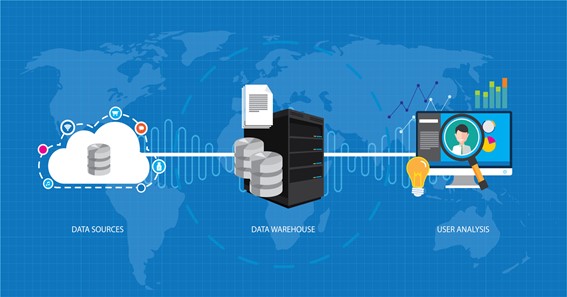Organizations have been using Google cloud to develop their cloud data as it provides the ability to fuel data transformation like never before. Google Cloud Platform Analytics is part of Google Cloud which comprises Google workspace and Google Cloud Platform public cloud.
Over the decade, one of the most significant shifts in data analytics has been to run OLAP workloads directly on columnar databases instead of building data cubes or OLAP cubes. This is a huge change.
What is OLAP?
Online Analytical Processing (OLAP) is defined as a computing method or a tool to represent data in multidimensional structures. It allows the users to access the information and analyze the data from multiple frames of reference.
Some of the functions it provides are running ad hoc queries, running reports faster, and various other OLAP operations (like dicing, slicing, drilling down data, finding anomalies, finding relationships between data sets, etc.). OLAP includes many approaches to model data/databases and create specific analytical solutions.
The basic components of the OLAP system are:
The data source: Any transactional database from where data is obtained.
OLAP database: A database where data is stored for analysis after transformation and remodeling.
OLAP cube: It is a tool used for representing multidimensional data for analysis.
An analytical interface: A dedicated interface via which users interact with cubes and other analytical tools to visualize and report data.
Click here – Desktop as a Service, What is it, and Why Use it?
Why do you need OLAP?
OLAP is an effective solution for both IT departments and business users. As an IT professional, with OLAP, you get the advantage of enhanced data warehousing and other relational databases. While as a business user, it allows you fast and intuitive access to the centralized data and associated calculations required for analysis and reporting.
Further, it reduces the dependence of business users on IT resources for data analysis and reporting activities.
The five main characteristics of OLAP are:
- Business-focused calculations
- Business-focused multidimensional data
- Trustworthy data and calculations
- Speed-of-thought analysis
- Flexible and self-service reporting
Why should you migrate to Smart OLAP TM from OLAP?
Scalability
With legacy OLAP technologies, scaling was an expensive option, and they failed to keep up with the massive amounts of data landing into the cloud. On the other hand, Smart OLAP TM builds scalable cubes to overcome this challenge. Its advanced algorithms are designed to enable aggregations on trillions of rows of data.
Cloud Support
Legacy OLAP was unable to reap the benefits of the native elasticity of the cloud to scale up and down and optimize resources. In contrast, Smart OLAP TM is itself a cloud-native implementation of OLAP, which allows scaling indefinitely along with your chosen cloud data platform. Plus, it supports parallelism for both querying and building cubes and thus helps you deal with the complexity of the advanced data system.
Aggregation
With legacy OLAP, business users used to select the levels and hierarchies to build an aggregation manually. In contrast, Smart OLAP TM uses ML-powered Smart Recommendation EngineTM to create intelligent aggregates.
It uses an intelligent query analyzer and advanced data profiling to study query patterns and provide recommendations accordingly. Further, it does not require technical expertise to build optimized cube designs.
Performance
Though legacy OLAPs were able to handle frequent use cases, their performance deteriorated with an increase in scale and concurrency. However, Smart OLAP TM can provide instant responses even for complex queries applied on hundreds of dimensions and measures. It allows users to slice, dice, drill down, filter queries, explore massive datasets, and instantly provide answers.
Furthermore, Google Cloud Platform Analytics offers incredible features like data collection, analysis, visualization, monitoring, reporting, and integration with other applications.
Click here – Omnichannel retail trend: Top 5 to spearhead your business
To Know Some Great Stuff Do Visit WhyBenefit
To Know Some Great Stuff Do Visit ZipCodesPro
To Know Some Great Stuff Do Visit WhatIsFullformOf
